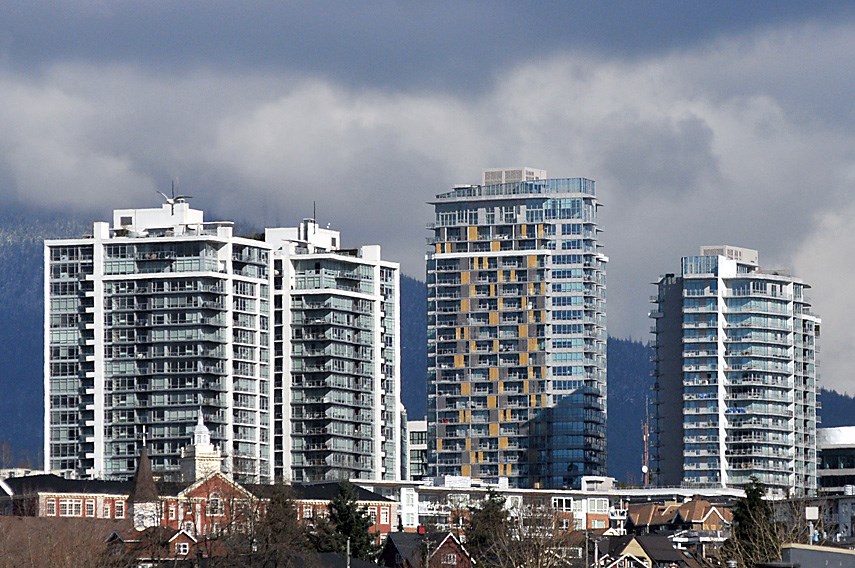The North Shore’s population reached 190,410 in 2021, according to the newest census data, a growth rate of 4.7 per cent since 2016.
“It’s not a Surrey level of growth,” said Andy Yan, director of the City Program at Simon Fraser University. “But it's also not a Trail or Merritt level of decline.”
In both raw numbers and as a percentage, the City of North Vancouver led the way with 5,221 new residents, or 9.9 per cent growth. As of July 1 last year, the city’s population was counted at 58,120.
West Vancouver bucked its trend from the previous census, which showed a declining population, and grew by 3.9 per cent since 2016, adding 1,649 new residents for a total of 44,122.
The District of North Vancouver, though, was among the laggards in the region with only 2.9 per cent growth over the last five years. The district gained 2,519 new residents for a total of 88,168.
Across Metro Vancouver, the average growth rate recorded in the census was 7.3 per cent, with the eastern cities along the Fraser River leading the way. Cities like Maple Ridge and Langley grew by more than 10 per cent.
To our north, Squamish grew by a whopping 22.2 per cent in five years.
Not surprisingly, the growth on the North Shore isn’t evenly spread. The blocks around Lower Lonsdale saw their population rise by 19.1 per cent in that time, while Central Lonsdale was up 8.7 per cent. Moodyville to Park & Tilford grew by 10.8 per cent.
Upper Lonsdale/Braemar, meanwhile, had a 0.5 per cent net-loss of population, and Grand Boulevard saw only 0.7 per cent growth.
The area around the Lynn Valley town centre was up 8.9 per cent, while the census tract that includes the emerging Lynn Creek town centre grew by 13.7 per cent. Some of those gains in the DNV were offset by losses elsewhere though. The neighbourhoods between Mount Seymour Parkway and Dollarton Road (with the exception of Tsleil-Waututh land and Raven Woods) saw a 5.4 per cent decline in residents. North of Mount Seymour Parkway, including areas like Blueridge and Deep Cove, saw losses of between two and three per cent.
In West Vancouver, the blocks flanking Marine Drive saw about 3.5 per cent growth, while the census tracts for upper Ambleside, Dundarave, and the British Properties added between five and six per cent.
Census data is critical for policy makers to direct their resources, but changes in population are just the first piece in a mosaic of information that will emerge as Statistics Canada releases more stats over the course of the year. In time, we’ll know more about local incomes, age, household composition, language, ethnocultural background, education and labour participation.
“We may know how many, but we don't yet know who,” Yan said.
The 2021 census will always come with a bit of a caveat. The data was collected midway through the pandemic, which resulted in major disruptions to normal living patterns, Yan said.
“A lot of this, we kind of wonder, if it's a lot of folks bunkering down for COVID,” he said.
And in Yan’s line of work, there’s a joke that statistics are like French bathing suits.
“They reveal a lot, but they can cover what is critical,” he quipped.
The census data also includes tallies on the number of private dwellings. During the 2016-2021 period, the City of North Van had a net increase of 2,775 new homes. The District of North Van, meanwhile, added 1,555. West Vancouver only has 146 more dwellings now than it did five years ago, although in the 2016 census, West Vancouver showed a net loss of homes.
The 2021 census data is also coming out as candidates prepare their platforms for the 2022 municipal elections in B.C. Those are often fought and won over the “teething pains of trying to manage that growth” and change more broadly, Yan noted.
“Too much? Not enough? My issue is how and why,” he said. “It's going into this idea of trying to build a much more complete community. I think that's really where the world has changed. There was a time when you thought you could isolate yourself from the rest of the world and be [viable as an incomplete community]. But then, really in the face of climate change, in the face of some sizable existential kind of questions, it's the issue of completeness.”
And he cautioned, attempting to preserve the status quo when it comes to things like population and housing can have unintended consequences, like lopsided demographics and pushing the labour force away from where they work.
“It helps to frame the problem for which you decide the kind of leadership you need,” Yan said. “Trying to put a city under glass is just as problematic as becoming a city of glass.”



